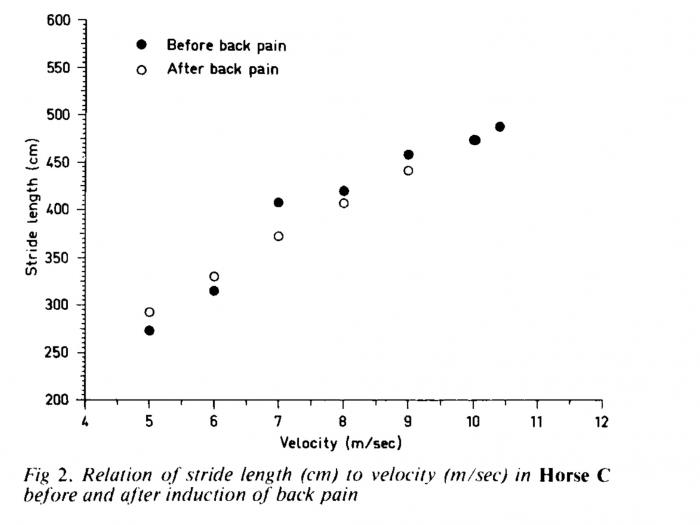
Effect of induced back pain on gait and performance
Effects of induced back pain on two sound horses on the left m longissimus dorsi between T10 and L1 produced pain during palpation, a decrease of performance but no measurable differences in basic stride characteristics. Two mild to slight lame horses and one sound horse were investigated during a more intensive clinical setting. A decrease of performance and an increase of stiffness of the thoracolumbar spine was observed and some changes of stride patterns were found.
Thoracolumbar disorders are a frequent discussed topic and there are difficulties to establish a specific diagnosis. This study aims to quantitate changes in gait and performance of standardbred trotters with induced back pain using a high speed cinematography camera.
The investigation was divided in to two parts. Stage one contained two sound horses that trotted on the treadmill before and after injection of lactic acid in the m longissimus dorsi at T10-L1 level. Stage two contained three horses (two lame) that were injected with a lactic acid solution. Both were filmed before and after induced back pain, 24 and 72 hours after injection. Blood samples and heart rates were recorded.
Some apparent stiffness of the spine and a greater muscular effort of the m longissimus dorsi and the gluteal muscles to maintain performance was observed. No signs of hind limb lameness occurred and no gross alterations of stride length. An inability of performing on high speed was one of the most striking features.
> Jeffcott et al; Equine veterinary journal 1982, 14 (2), 129-133 Click here for the Pubmed summary


